Huawei Mate 9: First look
The Mate 9 will supposedly be the first phone to feature Amazon's Alexa AI
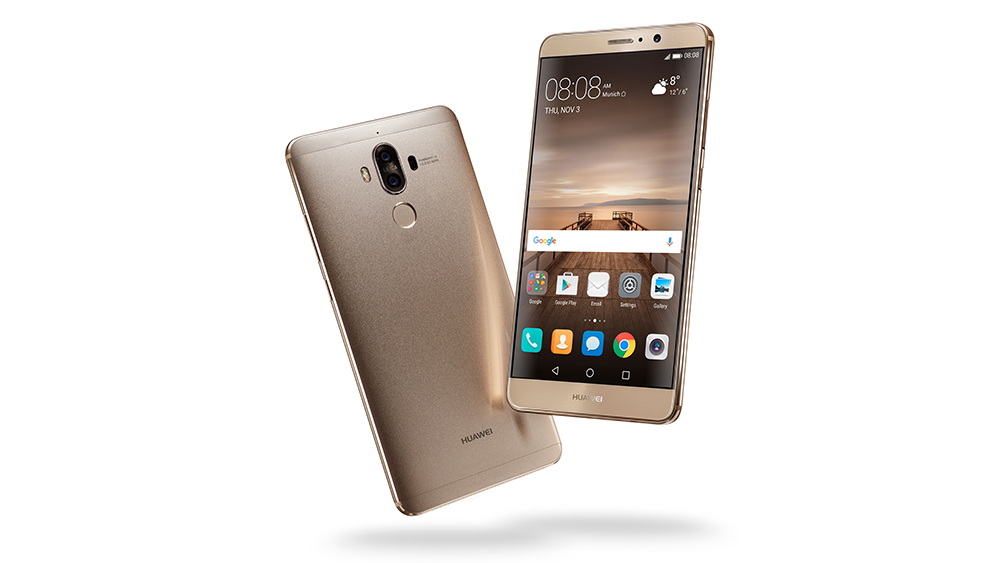
Huawei unveiled its latest flagship smartphones, the Mate 9 and the Porsche Design Mate 9, at an event in Munich late last year.
While this isn't a full review, we managed to try the Mate 9 out and check out its specs at the event, so read on for our rundown of its main features...
Alexa
The Huawei Mate 9 will be the first ever phone to feature Amazon's AI assistant Alexa, according to the Chinese manufacturer.
The news broke after Digital Trends' Andy Boxall spotted a billboard at CES 2017 in Las Vegas, advertising the device as the "first smartphone with Amazon Alexa".
It appears that the feature won't come as standard, however; although the phone will first hit shelves on 6 January, the advertisement also reveals that an Alexa-enabled variant won't be available until later on in the year.
Amazon has been making a concerted effort to push its cloud-powered digital assistant into more products, and this year's CES has seen Alexa integrated into a slew of new hardware formats, including TVs, fridges and even robots.
Given the sophistication displayed by Alexa's current deployment in the Amazon Echo, the AI software could do what Siri and Google Now have thus far failed to do, and actually make phone-based digital assistants useful.
Get the ITPro daily newsletter
Sign up today and you will receive a free copy of our Future Focus 2025 report - the leading guidance on AI, cybersecurity and other IT challenges as per 700+ senior executives
Design and display
The Mate 9 has an impressive 5.9in IPS display that fills the front, leaving quite thin bezels at the side and enough space at the bottom for the Huawei logo. The 1920 x 1080 Full HD display large screen estate should put it firmly in the phablet category, however it measures in at 156.9 x 78.9 x 7.9mm.
Compare this with the iPhone 7 Plus (158.2 x 77.9x7.3mm) and you get a lot more display for your money. And what a display; the colour output is vibrant with reds, greens and blues, virtually popping off the screen. It is also thinner than the Mate 8.
How Huawei manages to get such a big screen in without it feeling awkward to hold is a minor miracle. The bezels at the sides of the aluminium body are very ergonomic and gently curve, so we think that long periods holding the phone will be comfortable.
The phone will come in six colour options, Space Grey, Moonlight Silver, Ceramic White, Champagne Gold, Mocha Brown and Black.
Hardware
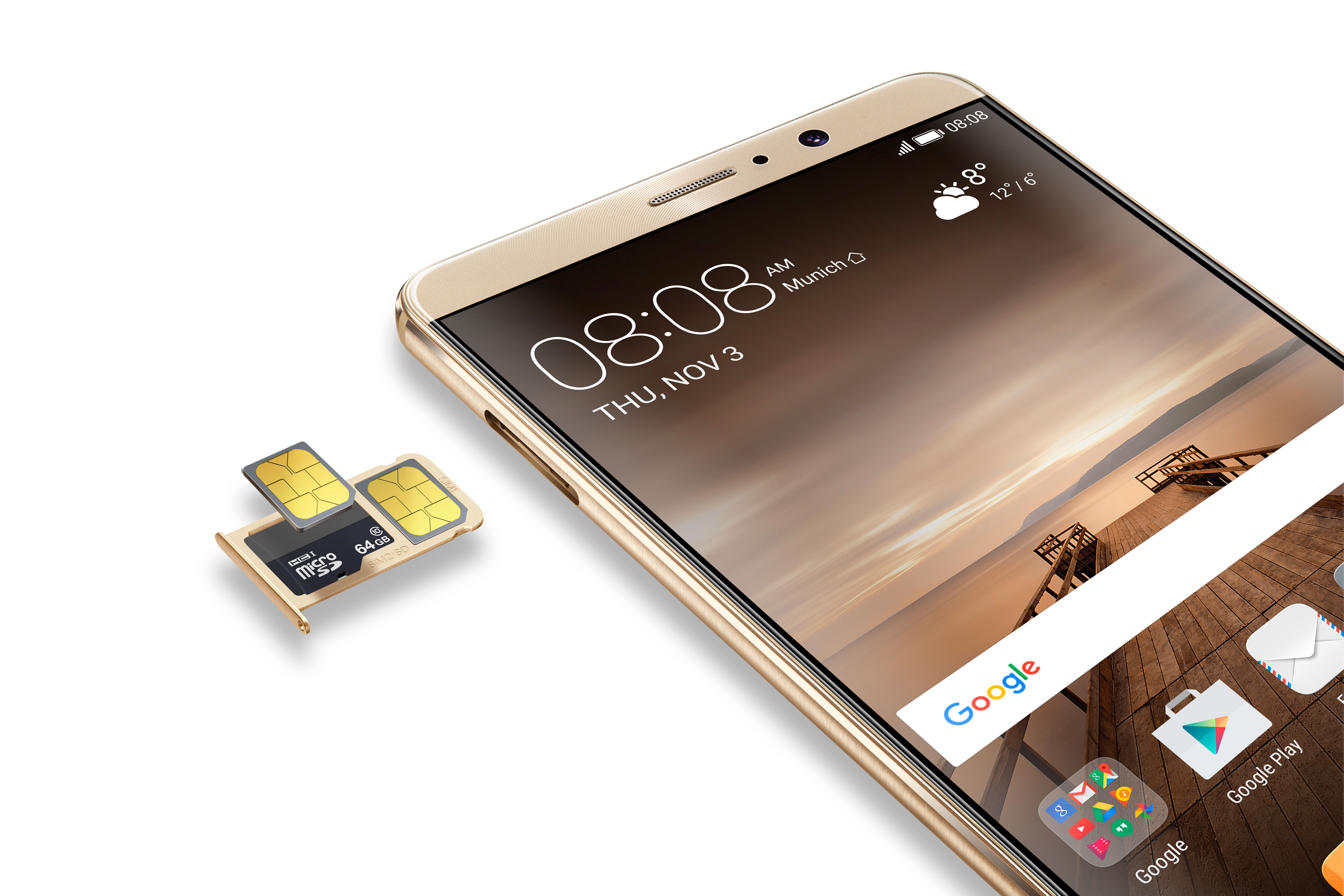
The Mate 9 features the Kirin chipset with an Octo-core Cortex-A73 processor (Cortex-A73 2.4GHz + A53 1.8GHz) and a Mali-G71 MP8 GPU. It boasts 4GB RAM, 64GB storage and a microSD slot supporting an extra 256GB of storage. Huawei claims that the phone improves on its predecessor's graphics capability by 400%.
There are also four microphones dotted around the device (two at the bottom, one at the top of the camera and one inside the earpiece. There is also an infrared remote control and a 3.5mm headphone jack (remember them?).
Software
The Mate 9 comes with the latest iteration of the Android operating system; Android N (Nougat). Huawei has also overhauled its overlay Emotion UI (EMUI). Now on version 5.0, it has pared back on some of the excesses in previous versions, making the OS slicker and more attractive with a white and blue colour scheme.
Huawei has also cut down on the number of taps and swipes needed to do anything, claiming that 90% of most tasks can now be done using three or fewer taps.
The phone also features a machine learning algorithm, which Huawei claims can learn what a user does with their phone and allocate resources on the CPU appropriately. It also offers improved memory optimisation with automatic cleaning. Huawei claims this should lead to a speed improvement of around 80% after 10,000 hours (a rather long 416 days) use.
Another feature is App Twin, which is a pretty convenient use case for the enterprise. This allows users to log into their professional and personal apps at the same time. For example, a user can have one Facebook app for business and another for personal.
Camera

Like the P9, the Mate 9 has a dual lens on the rear, developed in conjunction with Leica, comprising a 12-megapixel colour camera and a 20-megapixel monochrome camera. The two can be used to provide something Huawei calls "Hybrid Zoom". This supposedly provides a 2x optical zoom effect.
There is also an eight-megapixel camera on the front for selfies.
The phone is also capable of 4K video recording. Watching a demo video, the colours and details looked sharp but we couldn't help but notice a slight juddering in the playback. We are not sure if this is down to the phone or the playback equipment used in the demo during the keynote.
Battery
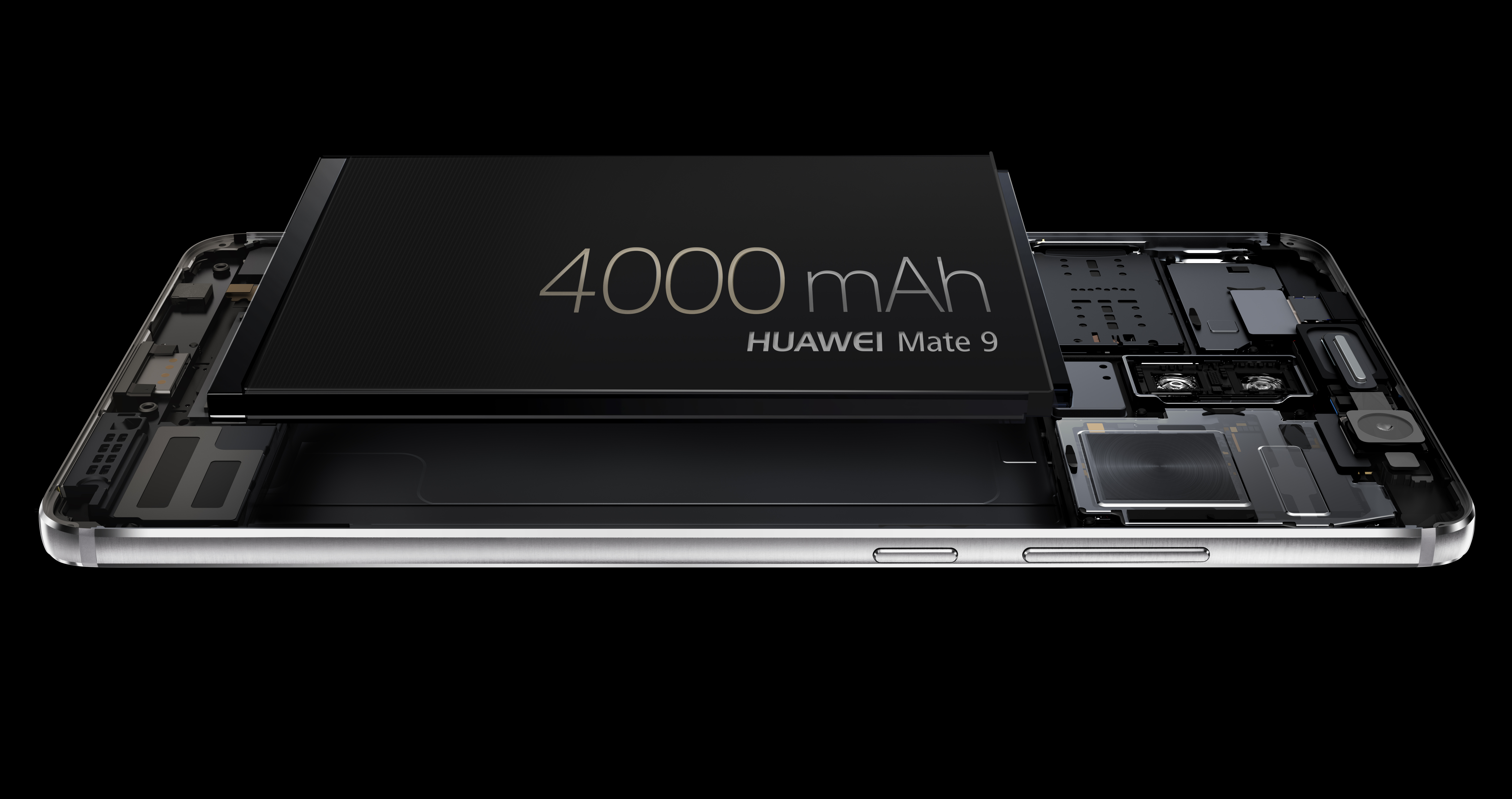
The Mate 9 packs an enormous 4,000mAh battery, making it one of the biggest on the market. Huawei also touted its charging technology called SuperCharge which can recharge a phone in ten minutes to get around 3.5 hours more use out of the handset.
Overall, the phone bettery should last over two days.
The technology uses chips not only in the phone but also in the charging plug to optimise charging through the phones USB-C port. It also claims to charge up to four times faster than the iPhone 7 Plus.
Verdict
The Mate 9 offers some high specs at a slightly high price of 699. The battery is particularly impressive for its fast charging capabilities. The huge screen should also please those looking for a phablet to replace the Note 7. It looks great but whether it will prise people from their iPhones and Galaxy remains to be seen.
Adam Shepherd has been a technology journalist since 2015, covering everything from cloud storage and security, to smartphones and servers. Over the course of his career, he’s seen the spread of 5G, the growing ubiquity of wireless devices, and the start of the connected revolution. He’s also been to more trade shows and technology conferences than he cares to count.
Adam is an avid follower of the latest hardware innovations, and he is never happier than when tinkering with complex network configurations, or exploring a new Linux distro. He was also previously a co-host on the ITPro Podcast, where he was often found ranting about his love of strange gadgets, his disdain for Windows Mobile, and everything in between.
You can find Adam tweeting about enterprise technology (or more often bad jokes) @AdamShepherUK.
-
 CISA issues warning in wake of Oracle cloud credentials leak
CISA issues warning in wake of Oracle cloud credentials leakNews The security agency has published guidance for enterprises at risk
By Ross Kelly
-
 Reports: White House mulling DeepSeek ban amid investigation
Reports: White House mulling DeepSeek ban amid investigationNews Nvidia is caught up in US-China AI battle, but Huang still visits DeepSeek in Beijing
By Nicole Kobie
-
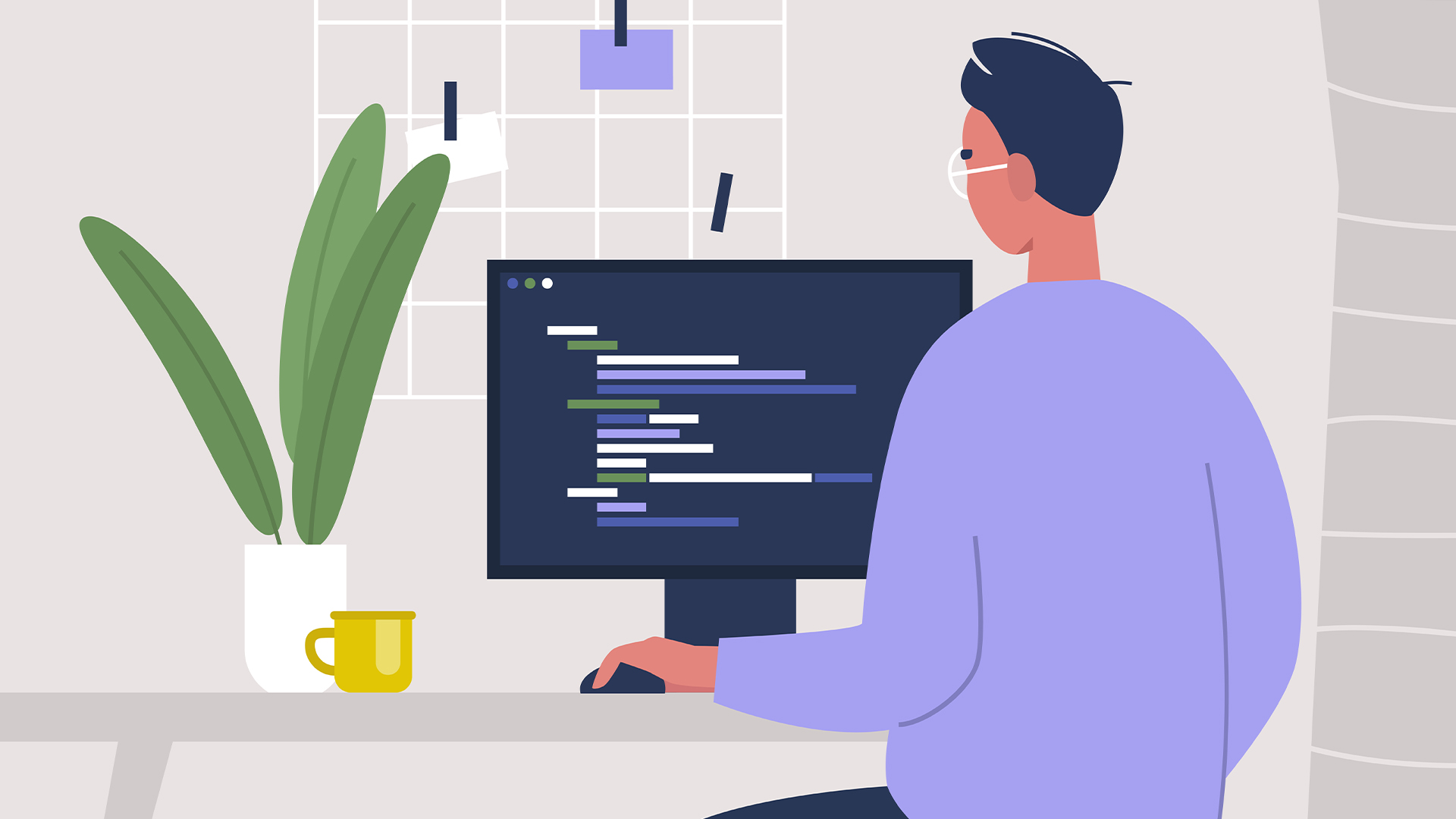 Application enablement in an AI world
Application enablement in an AI worldHow enterprises can tap into AI-fueled application enablement to build apps faster and deploy them while consuming fewer resources
By Keumars Afifi-Sabet
-
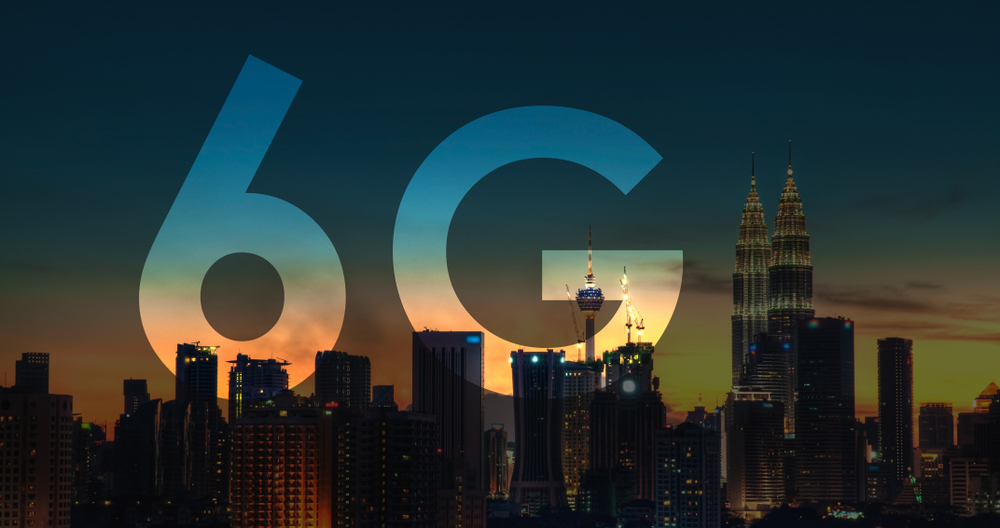 6G: Pioneering a new era of innovation and business value
6G: Pioneering a new era of innovation and business valueSponsored Content Discover how 6G will redefine the wireless industry through innovation, AI integration, and groundbreaking technology to drive new business value
By Rene Millman
-
 Huawei at Gitex Global 2024: driving innovation in industrial digitalization and intelligent transformation
Huawei at Gitex Global 2024: driving innovation in industrial digitalization and intelligent transformationSponsored Content Huawei showcased its latest advancements at Gitex Global 2024, focusing on accelerating digital transformation through innovative product launches, partnerships, and AI-ready ICT infrastructure
By ITPro
-
 Huawei Cloud: enabling business and industry growth
Huawei Cloud: enabling business and industry growthSponsored Content Huawei Cloud is transforming industries with innovative cloud, AI, and digital solutions, empowering enterprises to achieve growth and success in the digital age
By ITPro
-
 Amplifying intelligence: Huawei’s smart solutions for manufacturing and large enterprises
Amplifying intelligence: Huawei’s smart solutions for manufacturing and large enterprisesSponsored Content As industries face mounting pressures to innovate, Huawei is launching ten new intelligent solutions, designed to transform manufacturing, retail, and real estate through cutting-edge ICT represented by AI and cloud technologies
By ITPro
-
 How the media industry can take advantage of the AI wave
How the media industry can take advantage of the AI waveSponsored Content Welcome to a new way to create and consume movies, animation, and even the morning news
By ITPro
-
 Huawei AI tech used to filter out invasive salmon species in Norway river trial
Huawei AI tech used to filter out invasive salmon species in Norway river trialNews Pacific salmon threaten to overwhelm Atlantic salmon in hundreds of rivers along the nation’s coastline
By Zach Marzouk
-
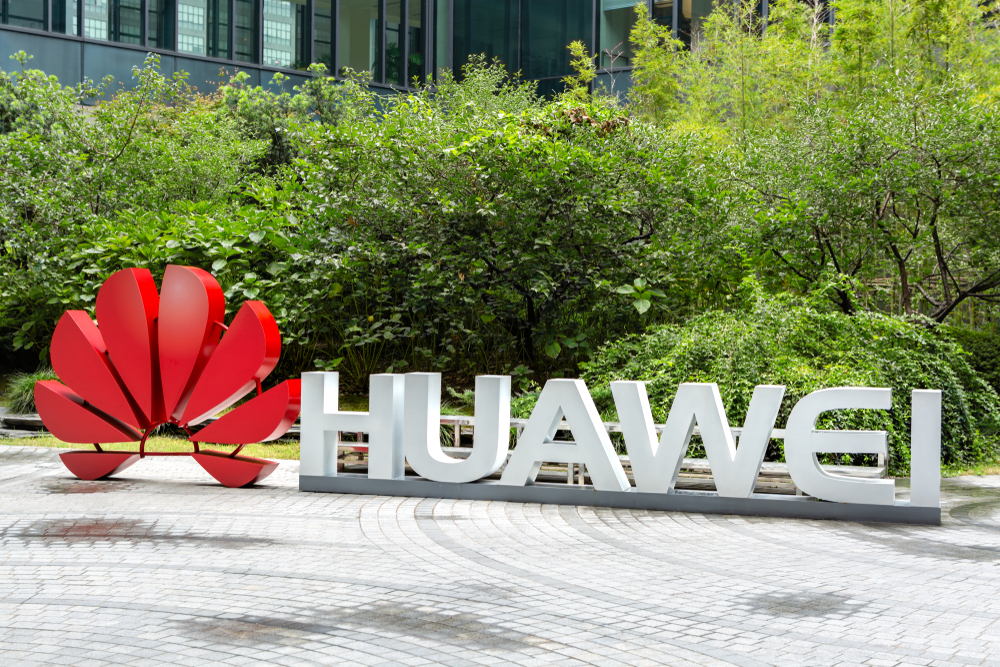 Huawei’s founder calls for a shift to software due to US sanctions
Huawei’s founder calls for a shift to software due to US sanctionsNews The Chinese tech giant’s hardware business is struggling due to US trade restrictions on tech deals
By Mike Brassfield

